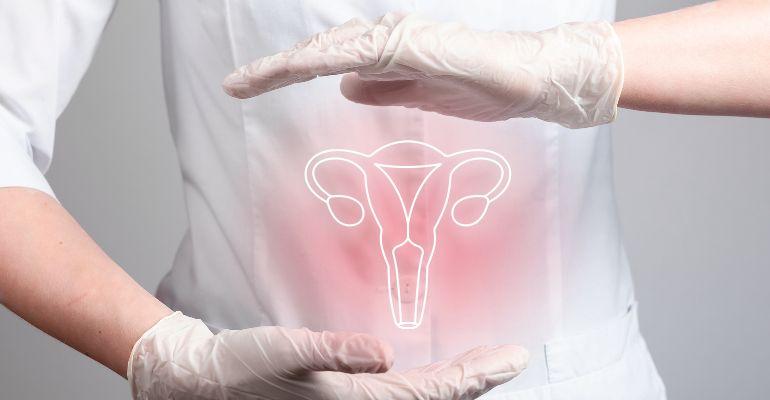According to the World Health Organisation (WHO), cervical cancer is the sixth most common cancer in women in the Eastern Mediterranean (EM) Region. In 2020, an estimated 89,800 women were diagnosed with cervical cancer in the region, and more than 47,500 women have died from the disease. The WHO has developed a regional cervical cancer elimination strategy adapted to the religious, cultural, social, economic and geographical contexts in the Eastern Mediterranean to eliminate cervical cancer. And to scale up efforts on ending cervical cancer, the awareness initiative’s messaging is loud and clear - Get informed. Get screened. Get vaccinated.
Cervical cancer is a type of cancer found anywhere in the cervix (the entrance to the uterus from the vagina). It's part of the reproductive system and is sometimes called the neck of the womb. It usually grows very slowly. The severity of the disease depends on the size of the affected area, its spread and the immunity of an individual. Almost all cervical cancer cases (99 per cent) are linked to infection with high-risk human papillomavirus (HPV), an extremely common virus transmitted through sexual contact. Although most infections with HPV resolve immediately and cause no symptoms, persistent infection can cause cervical cancer in women.
Awareness is key
HPV is an abbreviation for human papillomavirus, which is associated with causing cervical cancers as well as genital warts in most cases. HPV is sexually transmitted, and one can get it from anal, oral, or vaginal sex. Scientists and doctors have discovered over 200 types of HPV, but most don’t cause cervical cancer as an individual’s immune system usually controls infection. Sometimes high-risk HPV infections are not successfully controlled by immunity alone. When that persists for many years, it can form an area of precancerous cells, which, if untreated, may worsen over time and become cancerous. Research has found that it can take 10 to 20 years, or even longer, for HPV-infected cervical cells to develop into a cancerous tumour. Once high-risk HPV infects cells, it disrupts how these cells communicate with one another, causing infected cells to multiply in an uncontrolled manner.
Doctors categorise HPV into two types: (a) HPV types 6 and 11 can cause genital warts. These HPV types aren’t associated with causing cancer and are considered low-risk. (b) HPV types 16 and 18 are high-risk types.
Among women whose cervical cells are infected with high-risk HPV, several factors increase the chance that the infection will be long-lasting and lead to precancerous cervical cells. These include having a very aggressive HPV type, particularly HPV 16 or HPV 18. If an individual has either of these HPV types, one should ensure to receive diagnostic testing with a colposcopy. Also, quitting smoking can help the patient’s body to fight HPV. The weak immune system plays an important factor as well. If a person has HIV or is taking medicines that suppress her immune system, then it is ideal for them to talk to their healthcare provider about diagnostic testing and follow-up.
Screening is crucial for prevention
Screening helps doctors to check for the disease before the symptoms appear. The objective of cervical cancer screening is to find precancerous cervical cell changes and establish when/which treatment can prevent the disease from developing. This screening typically starts at age 30 and is repeated periodically. The cancer is usually easier to treat if found at an early stage. By the time symptoms such as vaginal bleeding (after sexual intercourse/menopause), pelvic pain or pain during intercourse, vaginal bleeding between periods etc., appear, cervical cancer may have begun to spread, which makes treatment more difficult.
There are three main ways to screen for cervical cancer. Firstly, the HPV test, which checks cells for infection with high-risk HPV types that can cause cervical cancer. Secondly, the Pap test (also called a Pap smear or cervical cytology) which collects cervical cells. These collected cells are examined for changes caused by HPV that may—if left untreated—turn into cervical cancer. Pap tests can find both precancerous cells and cervical cancer cells. It may also sometimes find conditions that are not cancer, such as infection or inflammation. Finally, the HPV/Pap co-test uses an HPV test and Pap test together to check for both high-risk HPV and cervical cell changes.
Vaccination is vital to save lives
The HPV vaccine protects against infection from nine HPV types; the two low-risk HPV types that cause most genital warts, plus the seven high-risk HPVs that cause most HPV-related cancers.
Vaccination provides strong and safe protection against new HPV infections. It is the best-known preventive measure but does not cure an infection once a person has it. However, the vaccine is not for treating infections or diseases caused by HPV but instead should be taken as prevention rather than cure.
The vaccine is given in two doses and offers the most protection when given at ages 9-14. It is estimated to prevent up to 90 per cent of HPV-related cancers.
Cervical cancer is one of the most preventable and treatable types of cancer. This message should be loud and clear that this disease is successfully treatable, and many lives can indeed be saved as long as it is diagnosed early and managed effectively. Patients diagnosed at later stages of cancer can also be managed with appropriate treatment and palliative care.
Since there are multiple and intersecting sociocultural, economic and health challenges in the MENA/EM region, there is a dire need for discussion and close interaction with national stakeholders to better understand the perceptions of policy-makers as well as the barriers and opportunities related to implementation. Therefore, going forward, our goal should be to educate the masses on various aspects of cervical cancer while endeavouring to create a healthy ecosystem so that they may receive the benefits of advances in medical science, be it screening, treatment or HPV vaccination – only then we can strive towards realising the dream of eliminating cervical cancer in its truest sense.

